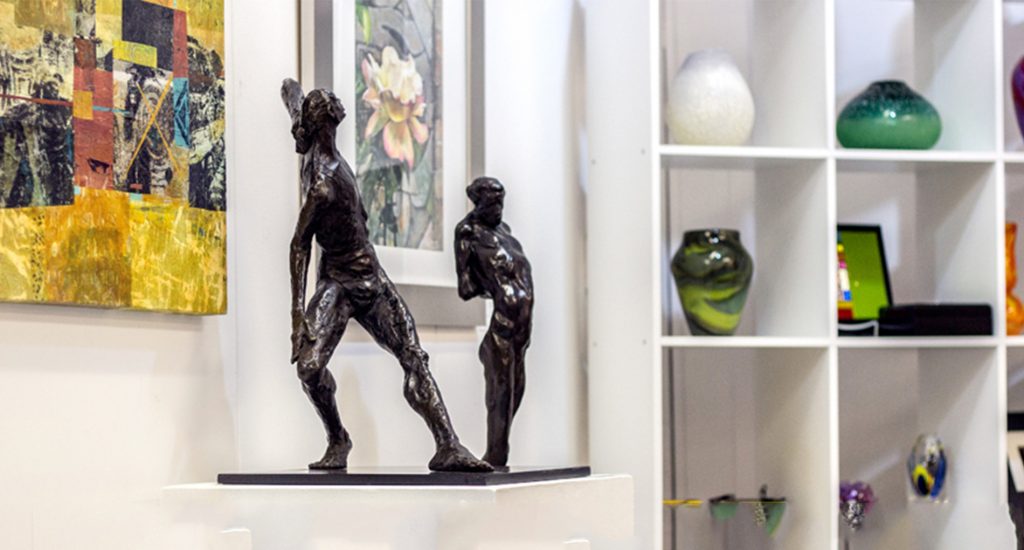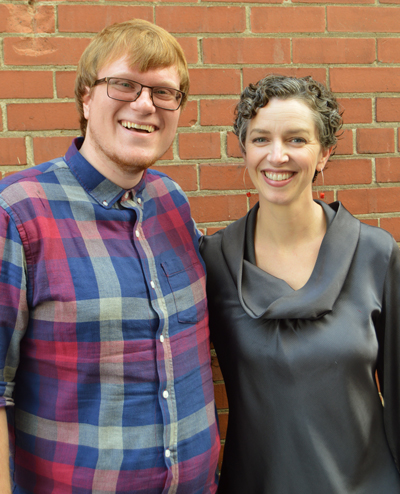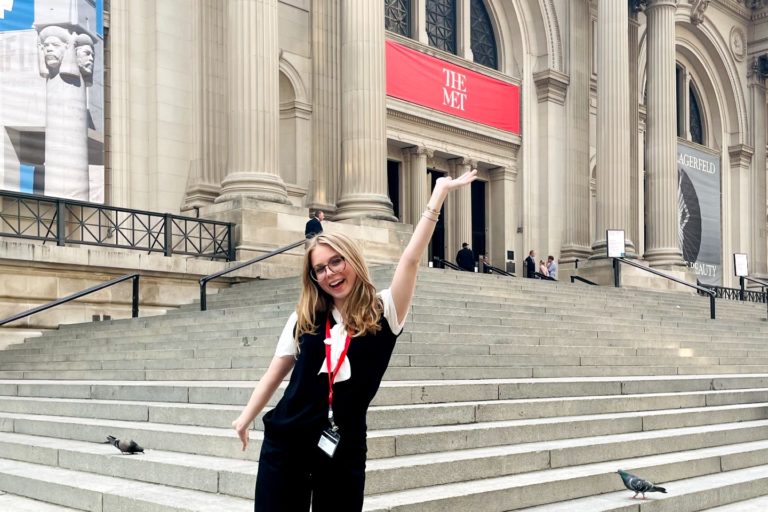
Arts and Cultural Managment and Residental College of Arts and Humanities senior Marcus Fields has made a huge impact on multiple arts organizations in Lansing. Recently, he played a cruical role in the $22,500 grant received by the Lansing Arts Gallery from the Michigan Council for Arts and Cultural Affairs grants. We sat down with the College of Arts & Letters Events Intern to ask him about his experiences with the Lansing Art Gallery and how being an Arts and Cultural Management student has helped him help others in the community.

How did you get involved with Lansing Art Gallery?
During the summer after my freshman year, I was placed in an internship at the Arts Council of Greater Lansing with the help of my advisor from the Arts and Cultural Management and Museum Studies (ACMMS) program. I worked directly with Barb Whitney, who was the Program Manager at ACGL at the time. At the end of the summer, Barb accepted a position as the Executive Director of the Lansing Art Gallery. The following summer, I applied to intern at the gallery and again I worked directly with Barb as the arts administration intern. I was responsible for the communication strategy for their 50th anniversary Time/Place competition and assisting their Project Pop Up events throughout the summer. Since then, I’ve worked with the gallery through my internship with the College of Arts & Letters on the NEA/NEH 50th Anniversary Event that CAL hosted in 2015. Additionally, I’ve worked with them through classes here at MSU, including the Promotions and E-Commerce class through the ACMMS program, where my classmates and I developed a communications and marketing strategy for their upcoming exhibition.
What was your role in the Michigan Council for Arts and Cultural Affairs application?
Every year, the MCACA accepts applications for their Operational Support Grants, which supports organizations providing learning experiences through arts and culture. All of the reviewers for the applications read the proposals and then convene to discuss the applications in a room where the public is allowed to listen.
While I was interning at Lansing Art Gallery (LAG), none of the staff or volunteers could make it to the review panel to hear the reviewers comments on their proposal, so I went as a representative for the gallery. I sat in on the comments of several of the applications to gain a better understanding of what the reviewers were looking for in these applications. After hearing these comments, and the comments on the LAG application, I compiled a list of the comments made by each reviewer (including what they liked and didn’t like) and the general takeaways I gathered from the other proposals I listened to.
The following week, I looked at the gallery’s draft proposal for their next fiscal year of the Operational Support Grant and I suggested changes to their narrative based on what I learned from the review committee, including what to add, how to word pieces differently, and what can be omitted altogether.
Recently, Lansing Art Gallery was notified that they received a 95.6% score on their application for FY17. The success of this application was in part due to the notes that I took and the edits that I made on the application, but was mostly due to the hard work of Barb and the talented staff and Board of Directors at LAG. Receiving such a high score on the application means that they’ll receive top-tier funding and they have the option to receive the funds annually and waive the application process for the next two years (which is amazing because time is money in a nonprofit arts and culture organization, and this will save Barb and the staff at the gallery more than 100 hours of work).
What have you used from the Arts and Cultural Managment and Museum Studies program that helped you accomplish this for the Lansing Art Gallery?
The general Arts and Cultural Management requirements include learning about arts marketing, event management and administration. These classes helped me secure my internship at LAG and provided a background for the work I was doing. One of the requirements of the program is an elective course relating to arts management, so I chose to take a grant and proposal writing class through WRAC during the summer that I was interning at ACGL.
How’d you get involved in ACMMS?
It sort of just happened. Before I came to MSU, my friend who was a theatre major told me that they were starting the ACMMS program. During my freshman year, I took the intro course, and I really liked it. I started my internship with the College of Arts & Letters the same summer that I interned with ACGL, and I worked with a faculty member from ACMMS at the college. Since then, I’ve been involved in a number of projects with a number of the ACMMS faculty.
What has MSU and the College of Arts & Letters helped you accomplish?
Michigan State University, the Residential College of Arts and Humanities, the College of Arts & Letters, and the Arts and Cultural Management and Museum studies program have provided countless opportunities including classes, internships, and community projects that have contributed to my learning and my growth as a person.


